R vs Python For Data Science In 2022

If you are someone who is a beginner in the field of Data Science and Machine Learning and want to learn it, you must be confused between R and Python as both languages are widely used for data science.
R and Python are two open-source programming languages with great community support. New libraries or tools are added continuously to their respective spaces. R is mainly used for statistical analysis while Python provides a wider approach to data science.
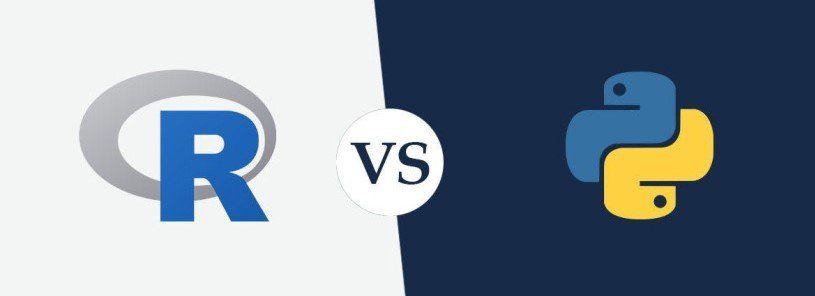
R
R is a popular statistical modeling language that is used by statistics and data scientists. It provides support for various statistical packages that are most widely used for data analysis and data modeling. Rose Ihaka and Robert Gentleman together developed R in 1995 at the University of Auckland.
There are more than 10,000 packages in the library distribution CRAN repository of R. These packages are tailored for a variety of statistical applications. While R may be a hardcore statistical language, it provides extensible support for various fields, ranging from healthcare to astronomy and genomics.
Popular Packages Of R
- dplyr, plyr, and data table for data manipulation.
- sstringto manipulate strings.
- zoo to work with regular and irregular time series.
- ggvis, lattice, and ggplot2 data visualization.
- caret for machine learning.
Applications of R
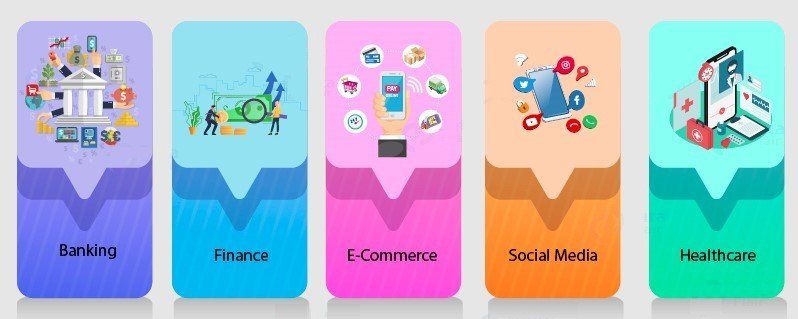
Python
Python is a popular programming language used for developing web applications as well as data science operations. Python provides a large number of libraries that appeal to programmers and data scientists alike.
What makes python so popular is its ease of learning. This makes Python a highly popular language among newbies who want to gain in-depth insight into computer programming. Python is highly readable, easy to understand, and compresses complex code in single functionalities.
Popular Libraries Of Python
- pandas for data manipulation.
- SciPy/NumPy for scientific computing.
- scikit-learn for machine learning.
- matplotlib for graphics.
- statsmodels to explore data, estimate statistical models, and perform statistical tests and unit tests.
Applications of python
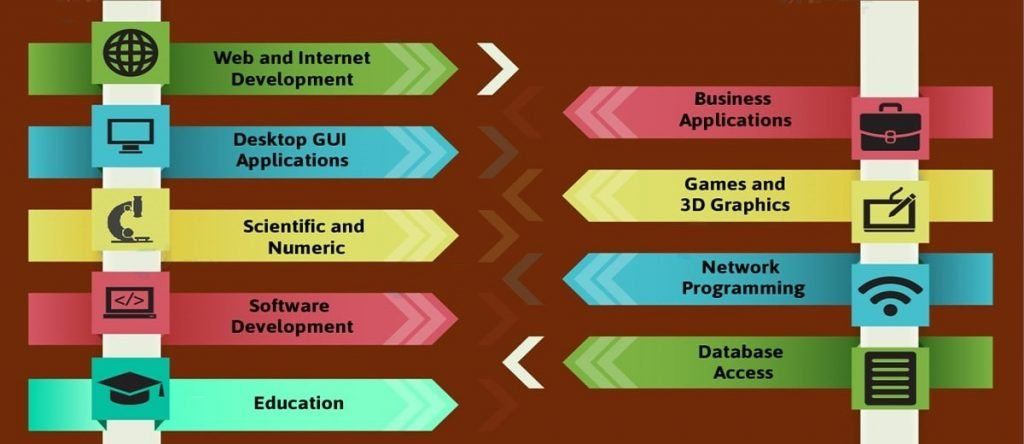
R vs Python for Data Science
R and Python are states of the art in terms of programming languages oriented toward data science. Learning both of them is a perfect solution.
With the massive growth in the importance of Big data and Data Science in the software industry, two languages have emerged as the most favorable languages for developers that are R and Python. These two languages have become the first choice of data scientists and data analysts. Both of these are similar yet different in their ways which makes it difficult for the developer to choose one among them.
While R is most widely used for statistical modeling and data analysis, Python is used for data analysis as well as web application development.
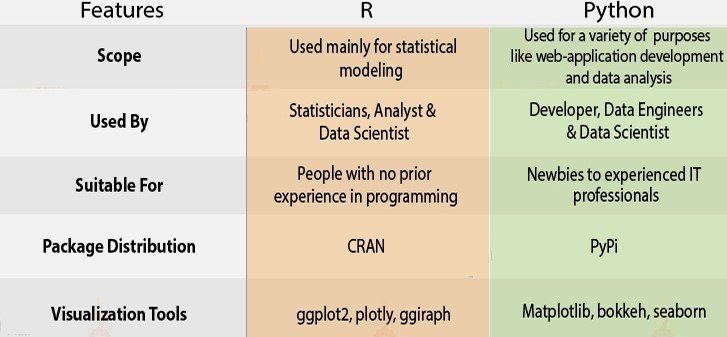
Although it is suggested to use the language you are most comfortable with and one that suits the needs of your organization, for this article, we will evaluate two languages. Here we will compare R and Python in four key categories: Data visualization, Modeling Libraries, Learning Curves, and Community Support.
Data Visualization
Any language or software package for data science should have good data visualization tools. Good data visualization involves clarity. No matter how complicated your model is, there will be a simple and unambiguous way of illustrating your results such that even a layperson would understand.

- Data visualization in R:- Many libraries could be used for data visualization in R but
ggplot2are the clear winner in terms of usage and popularity? The library uses a grammar of graphics philosophy, with layers used to draw objects on plots. Layers are often interconnected with each other and can share many common features. These layers allow one to create sophisticated plots with very few lines of code. The library allows the plotting of summary functions.
It is, however, worth noting that python includes aggplotlibrary, based on similar functionality as the originalggplot2in R. It is for this reason that R and Python both are on par with each other in this department. - Data visualization in Python:– Python is renowned for its extensive number of libraries. There are plenty of libraries that can be used for plotting and visualizations. The most popular libraries are matplotlib and seaborn. The library matplotlib is adapted from, it has similar features and styles. The library is a very powerful visualization tool with all kinds of functionality built in. It can work well with other Python data science libraries,
pandasandnumpy.
Althoughmatplotlibcan make a whole host of graphs and plots, what it lacks is simplicity.seabornbuilds on top ofmatplotlib, including more aesthetic graphs and plots. The library is surely an improvement onmatplotlib‘s archaic style, but it still has the same fundamental problem creating figures can be very complicated. However, recent developments have tried to make things simpler.
Modeling Libraries
Data science requires the use of many algorithms. These sophisticated mathematical methods require robust computation. It is rarely or maybe never the case that you as a data scientist need to code the whole algorithm on your own. Sometimes it’s very hard to do so, data scientists need languages with built-in modeling support. One of the biggest reasons why R and Python get so much traction in data science is because of the models you can easily build with them.
- Modeling Libraries in R:- R was developed by statisticians and scientists to perform statistical analysis. One can build a plethora of models using R. R has plenty of libraries, approximately 10000 of them. The
micepackage,rpart,partyandcaretare the most widely used. These packages will have your back, starting from the pre-modeling phase to the post-model/optimization phase. - Since you can use these libraries to solve almost any sort of problem; for this discussion let’s just look at what you can’t model. Python is lacking in statistical non-linear regression and mixed-effects models. Some would argue that these are not major barriers or can simply be circumvented. Kind of true but when the competition is stiff you have to be nitpicky to decide which is better.
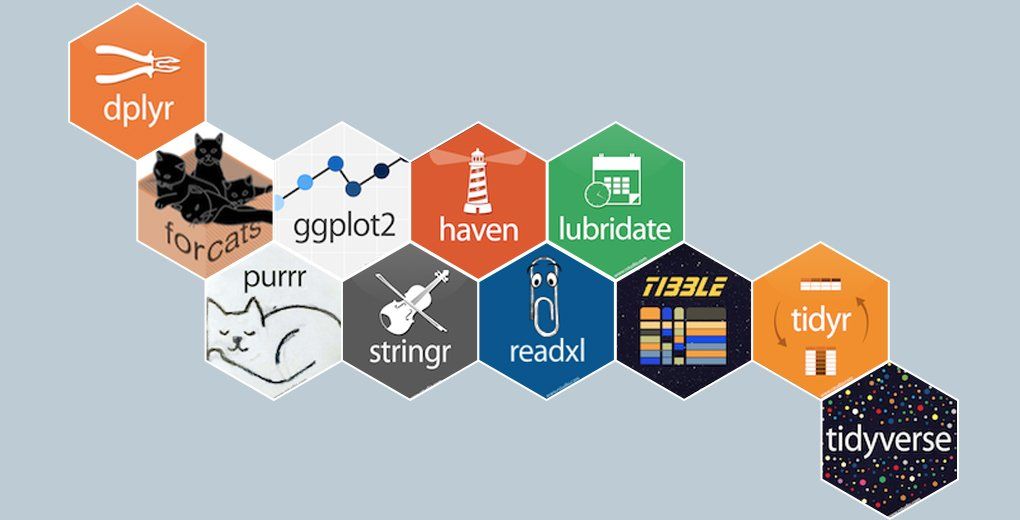
- Modeling libraries in Python:- As mentioned earlier Python has a very large number of libraries. So naturally, it comes as no surprise that Python has an ample amount of machine learning libraries. There is
scikit-learn,XGboost,TensorFlow,KerasandPyTorchjust to name a few. Python also has, which allows tabular forms of data. The librarypandasmakes it very easy to manipulate CSVs or Excel-based data. - In addition to this Python have great scientific packages like
numpy. Usingnumpy, you can do complicated mathematical calculations like matrix operations in an instant. All of these packages combined, make Python suited for hardcore modeling.
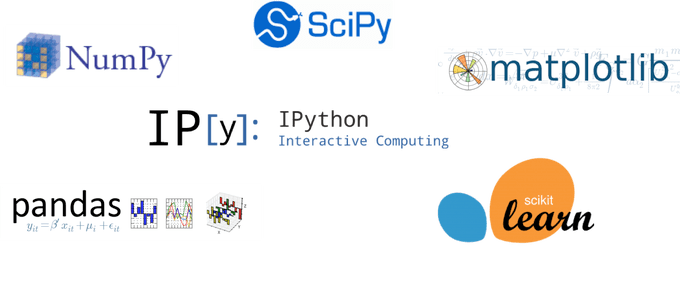
Learning Curves
Many people are looking to get on the data science bandwagon, and many of them have little or no programming experience. Learning a new language can be challenging, especially if it is your first. For this reason, it is appropriate to include ease of learning as a metric when comparing the two languages.
- Learning Curves in R:- It would be wrong to say that R is a difficult language but yes, R is simpler than many languages like C++ or JavaScript. Like Python, much of R’s syntax is based on C, but unlike Python R was not envisioned as a language that anyone could learn and use, as it was specifically initially designed for statisticians and scientists. IDEs such as RStudio have made R significantly more accessible, but in comparison with Python, R is relatively more difficult to learn.
- Learning Curves in Python:- Python was designed in 1989 with a philosophy that emphasizes code readability and a vision to make programming easy or simple, the designers of Python succeeded as the language is fairly easy to learn. Although Python takes inspiration for its syntax from C, unlike C it is uncomplicated. Since anyone can pick it up in relatively less time, you can say it’s a language for beginners.
Community Support
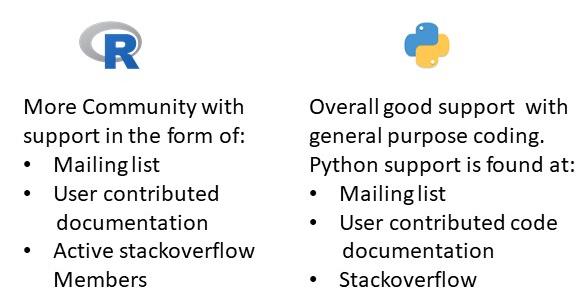
As a data scientist, you are required to solve problems that you haven’t encountered before. Sometimes you may have difficulty finding the relevant library or package that could help you solve your problem. To find a solution, it is not uncommon for people to search in the language’s official documentation or online community forums. Having good community support can help programmers to work more efficiently.
Both of these languages have active StackOverflow members and also an active mailing list available. R has an online R-documentation where you can find information about certain functions and functions inputs. Most Python libraries like pandas and scikit-learn have their official online documentation that explains each library.
R vs Python for machine learning
R and Python are the two most commonly used programming languages for Machine Learning and because of the popularity of both languages, freshers are getting confused, about whether they should choose R or Python language to commence their career in the Machine learning domain. Here we are discussing R vs Python for machine learning in some factors. It will help you to understand these two languages better.
- Speed:- When it comes to speed, python is faster than R only till 1000 iterations but after the 1000 iterations, R starts using the apply function which increases its speed, in that situation R becomes faster than python.
- Code and Syntax:- R was built for static analysis, so it has many specific libraries for plotting as well. This is the reason R comes up with beautiful graphs and charts. On the other hand, Python’s main agenda was not for statistical analysis. So in the early stages of the python packages for data analysis was an issue, but it has improved a lot.
- Deep Learning:- Deep Learning is the main part of artificial intelligence. When it comes to deep learning Python is more versatile than R as it provides more features for deep learning whereas R is new to Deep Learning.
Business Analytics
Popularity
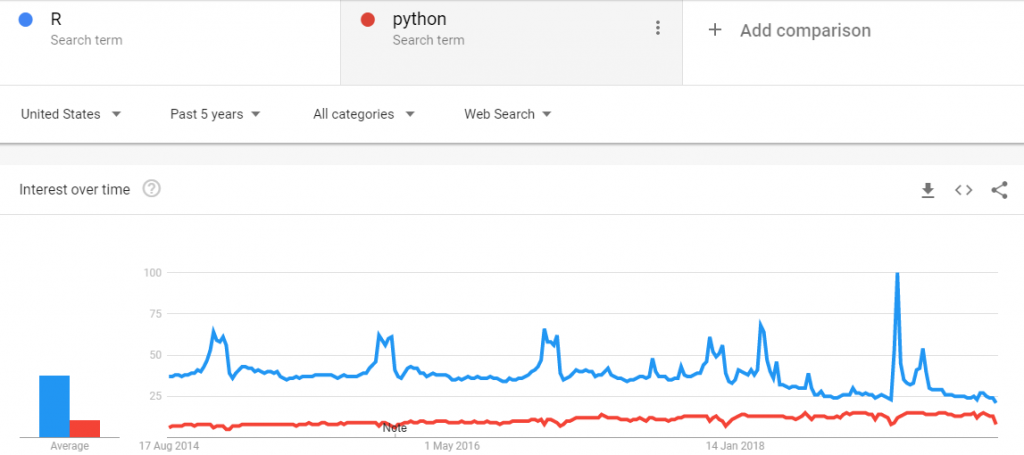
Here is a five-year graph from 14 Aug 2014 to 14 Jan 2018. It is clearly shown in the graph R is more popular than Python according to trends on Google for the last five years.
Jobs
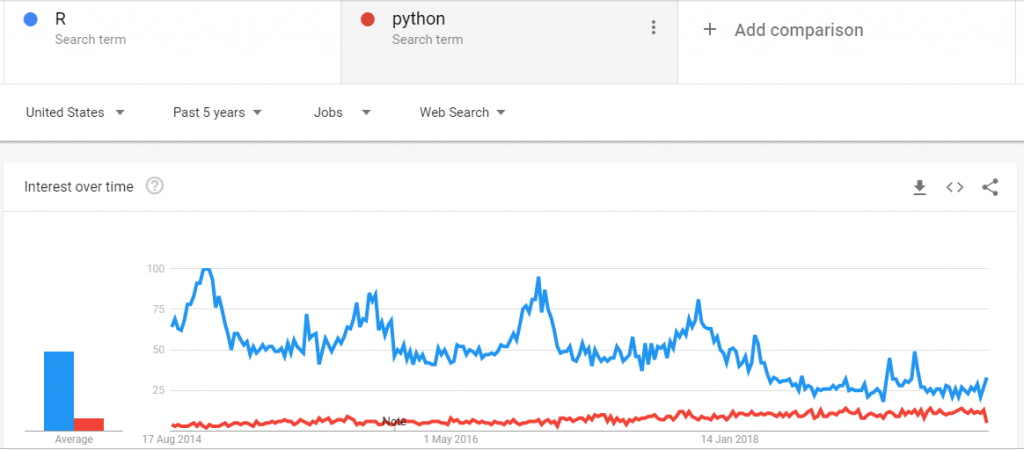
So this is the five-year graph for job trends in R and Python according to Google. This graph shows that in 2014, the ratio of R jobs was quite high compared to 2018. That means the demand for R developers is decreasing with time. Compare to 2014 jobs in Python, demand for Python developers is increasing.
Salary
R Programmer Salaries in the United States:-
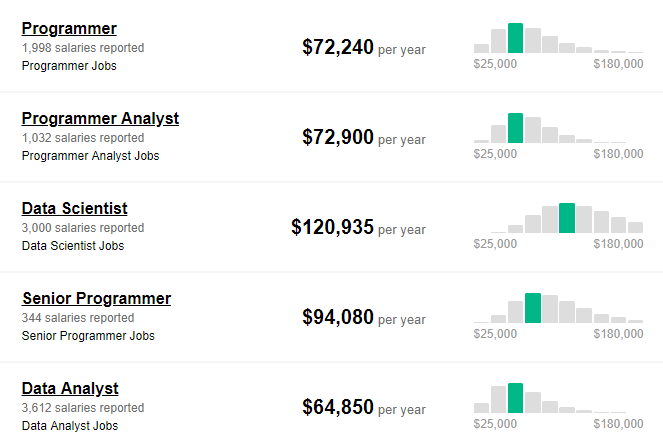
The average Python Developer Salary in the United States is $117,472 per year.

Conclusion
It is easy to understand the concept of R and Python Languages. while most developers are perfect in their fields they need to brush up on their skills often. In this guide, we have discussed all the assets of R vs Python. Make sure to follow us on codersera for more info.
FAQ's
What is R language?
R is a programming language for statistical computing and graphics supported by the R Core Team and the R Foundation for Statistical Computing.
What is Python Language?
Python is a high-level, general-purpose programming language. Its design philosophy emphasizes code readability with the use of significant indentation. Python is dynamically-typed and garbage-collected.
What is the advantage of the Python Language?
Python is a very productive language. Due to the simplicity of Python, developers can focus on solving the problem. They don't need to spend too much time understanding the syntax or behavior of the programming language. You write less code and get more things done.